Ferns are called the department of vascular crops, which includes both modern and ancient species of these plants, which appeared about 380 million years ago in Paleozoic Era. The first of them are rare plants that managed to preserve a wide variety. Next, we will talk about the varieties of this culture and how to care for the fern at home.
Content
Characteristic of culture
Most ferns are distinguished by such features as dimensions, life cycle and structure features. All of them have a characteristic approach. Because of what people usually unite them under the same name. Although, today there are about 320 genera and more than 9 thousand species of ferns.
It should be said that these plants do not have real leaves. What is called fern leaflets is actually a plane - a system of branches located in the same plane. She is still called Vaia or expected. However, ferns have a leaf plate, which is practically no different from the one that has other plants. This fact is explained by the fact that the fern places have undergone a compaction, due to which the plate of the future sheet appeared. In order for Wije to be called a full-fledged leaflet, there are not enough contours, within which the leaf plates are combined.
In detailed flower growing among ferns, a group of decorative plants is separated separately. At home you can grow several dozen varieties of this culture. Moreover, each of them has its appearance and peculiarities. Consider some types of fern.
Fern: photo
Types of ferns
Fern AdianTum
In a wild form, it is found in the territory of the Crimean Peninsula, the North Caucasus and Central Asia. You can find an elegant fern, which is called Adiantum Venus Hair. It is characterized by Cirque Vaia on thin bright brown cuttings, which look like hair look.
Finely disseated flat plane form a lush crown. It should be noted that for the period of growth, the volume of "leaves" increases almost twice. In addition, this grade of culture is distinguished by its unpretentiousness. It looks very good in the dark corners of the interior. The most undemanding is considered Adiantum Raddi, the place of origin of which is South America. Also unpretentious adiantum fine-pointed, which is very different from other ferns belonging to the same race.
Fern asplenium
One of the representatives of this kind is asplenium nest. This fern grows most often because it has shiny, spectacular or light green leaves. Unlike other types of this culture, the leaves of this variety are not separated. In their center, a dark veil is visible, which gradually becomes more expressive. In a wild form, this fern is considered epiphet that develops high on trees. Flowers of this fern are very beautiful.
Another representative of this kind is the Lukoviennium asplenium. It is a terrestrial plant with dissected massive branches of bright green. This species is different from other things that broken shoots are formed on the tips of Wai, which when entering a wet soil begin to quickly grow. Compared to other varieties of this kind, this species sprouts very quickly.
Fern Platisterium
This type of fern, belonging to the Multious Family, has strong differences from other varieties. They are that two types of Wai are formed, each of which is different in the specialization and in shape. So, sterile wiis have a rounded shape and are located at the base of the plant. The sporing on the dimensions are reminded by deer horns. It is said that this fern feeds himself. The fact is that young green shoots adjacent to the tree trunk are gradually acquired by a brown color and die away. As a result, become nutrients for the plant itself. From above, new growing sterile wiy appear. Another type of this variety of culture is a platitizerium bible. Its leaves can reach 550-710 mm. The leaflets of this plant never wipe so as not to damage the gentle silver fluff.
Fern Nebolpis
Ferns of this family are considered one of the most unpretentious. Most often they are grown at home. You can find many types of this culture on sale, each of which will be distinguished by the length and shape of Wai. One of them is an nephrolepp's sublime. With the growth of this plant, a socket made of light green leaves is formed, which can be in length to 1 m. On the underside of the shoots there are beams that contain a lot of dispute. It is with the help of them the plant breeds.
At home, the nephrolappa exalted and nephroleppish hearts are bred. When growing these plants, it is necessary to know that they do not like bright sunlight, more preferred multiple light. Therefore, it is better not to put the containers with them on the windows overlooking the south. It is advisable to decorate these fern western or oriental windows. If a lot of light comes into the room, the plant is best put a few meters from the window. This will create a light half, which will be a suitable condition for growing.
The room where the fern variety is grown should be well ventilated, but without drafts. Due to the fact that in winter the lighting will not be enough, you will have to turn on the daylight lamp for 5-7 hours daily. In summer, the fern can be taken out. Only in this case it is necessary to choose a place where the rays of the sun and rain drops will not fall on it. As for air humidity, it should be high enough for nephrolepp. This must be taken into account when leaving them. To do this, it is recommended to regularly spray the plant with ordinary water.
Fern landing
To plant a fern, how to care for him in the future is actually quite simple. But you should know some features and recommendations, for example, when it is best to plant this plant. So, the best time for disembarking decorative varieties of this culture is considered spring. The planting material should not be strongly shuffled into the soil. The fact is that the so-called point of growth should remain over the surface of the earth.
For planting culture, you should make a wide and shallow well. In order for the plant better closer, it is recommended to water it with water in which special preparations are dissolved. It is important to observe the dose indicated on the package. As for transplanting, ferns are quite poorly transferred to this procedure. Therefore, it should be done as less as possible. The need to transplant are, for example, cases where the root system of the plant almost completely filled out the container.
The composition of the soil for landing should be approximately following:
- one part of the peat,
- 1.5 pieces of purified sand,
- two parts of a leaf land
- 1.5 parts of herassk land.
Ferns with golden leaf in the soil is desirable to add more in a small amount of the bought bark of the tree. When the plant is planted, the soil must be abundantly pouring, after which it is necessary to close the container with glass. After about 1-2 months, the fern will germinate. As you can see, planting this type of flora is completely simple. In addition, the plant itself is unpretentious to the conditions. After all, it can germinate with any climatic factors. The main thing is to have the necessary temperature.
Fern: care at home
Homemade ferns do not have clearly expressed seasonal growth. Therefore, almost all year round, the condition of their content remain unchanged. Due to this, these decorative cultures have become very popular. But the ease of care does not mean that the plant is only enough to water once a few years. So, some recommendations and rules should be followed:
- For growing decorative ferns, various packagles are used, including a pot, suspended vases, unusual vases and even a row.
- Watering plants must be regularly. At the same time, the soil whom should not sleep. Otherwise, the lack of moisture can lead to the dying of the leaves. If the leaves still started drying, the normal state of the plant can still be restored. To do this, it is necessary to completely trim branches, after which it is to pour a culture and put in some bright place. After some time, shoots will grow again.
- Feelable home fern can bird litter or cow. The feeders should be made twice a month. It is recommended to simply add fertilizers to water for watering so that it becomes very muddy.
- To protect the plant from insects, you can spray the leaflets with tincture on tobacco. In a word, if you do not forget to care for this culture, it will always delight you with beauty and grace.
- To ensure a fern, a sufficient amount of moisture can be adjusted to the water tank or wet moss. If the room is very dry air, warm shower will be useful for the plant. So that during this procedure, the excess moisture did not get into the soil, before spraying the pot of the ground, it should be closed with a glued.
Reproduction of plants
These decorative cultures can be multiplied by different ways. For example, you can divide the bush, root shoot or use disputes. The last way is the longest. This should be considered if you decide to multiply the plant with it. So, according to this technique, it is necessary to collect disputes from the leaves from the leaves, then dry, then sow into peat, thereby creating the greenhouse conditions you need. From above, it is recommended to organize something like mini-greenhouse. For about two months, until shoots appear, this greenhouse should be placed in a dark place. When sprouts appear, the container must be put in a sunny place. When seedlings appear at 2-3 sheets, they need to be transplanted into separate pots.
It is much easier to ferns that can be multiplied with terrestrial shoots. They in these plants usually appear quite often. The chosen twig should be pressed to the soil, and after rooting, separating from the parent plant and put in a separate container.
Diseases and pests
Like other plants, this culture is subject to various diseases. Most often, the appearance of ailments is associated with violation of the conditions and non-compliance with the rules of cultivation. Pests can hit the plant almost at any stage of development. Often germination of ferns interfere with white bumps and shields. In addition, various fungal diseases are influenced negatively on the development of this culture. Whatever the disease does not appear at the plant, it must be treated. For this, special prepared preparations are usually used.

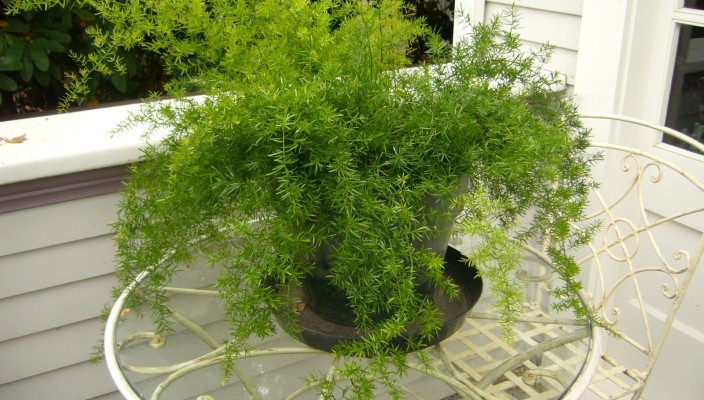
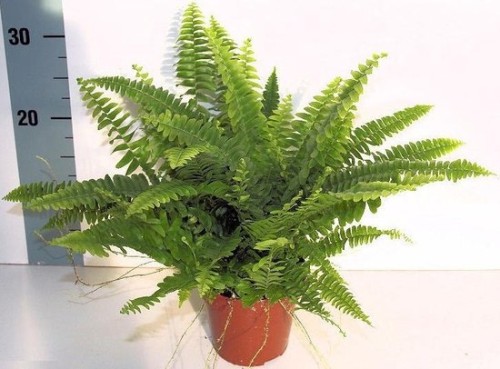
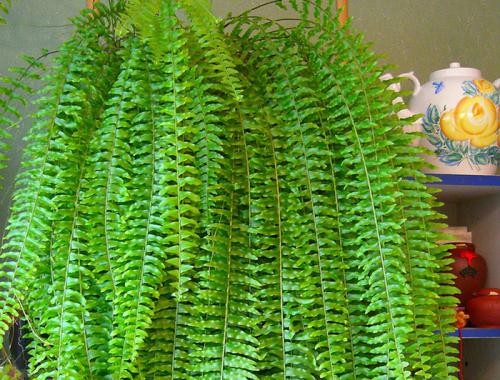


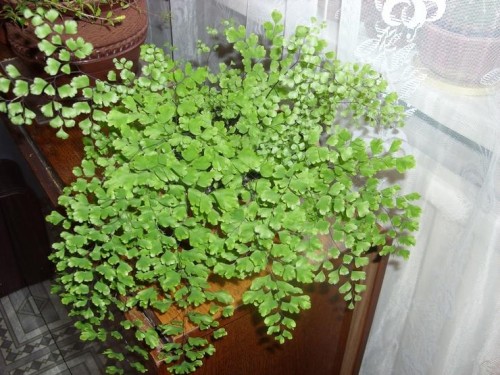
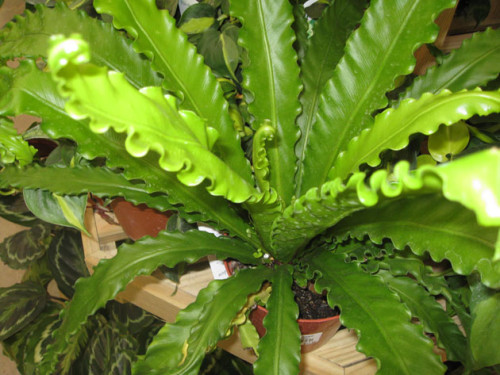

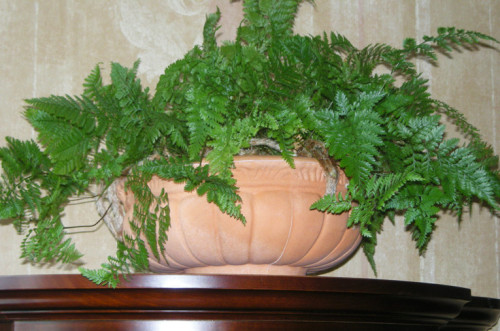
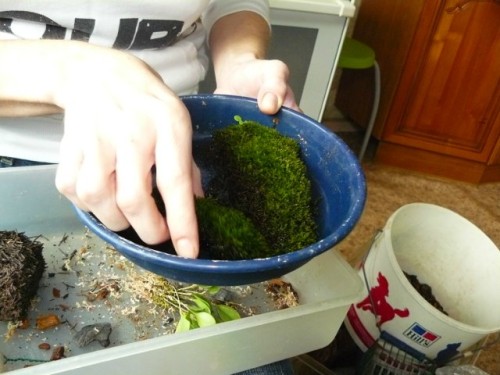
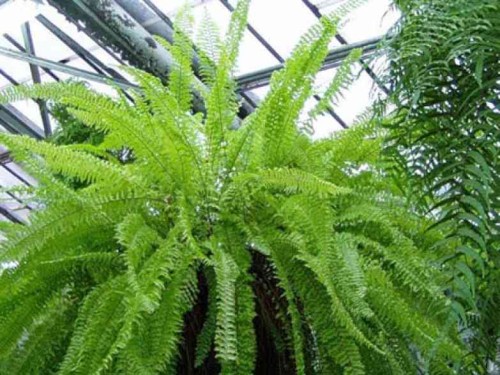
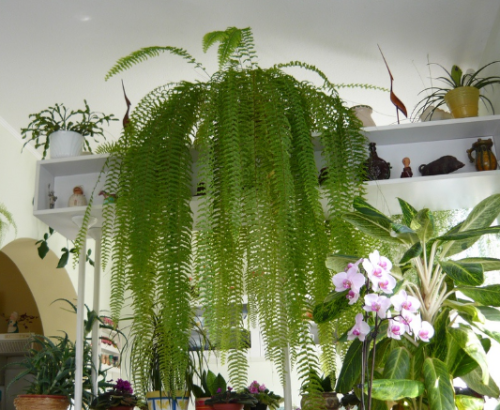


















Instead of nephrolpis, in the photograph of Davalia, instead of a platitizerium - not a fern at all, but asparagus!
Well, how can you?! If you do not want to write with the question, then at least "ask Google"!